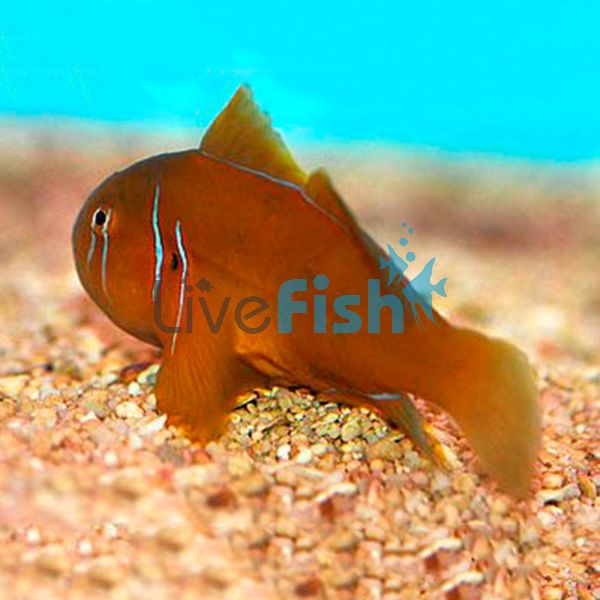Lemon Coral Goby - Medium
The Lemon Coral Goby is a popular aquarium fish due to its personality and hardiness. It has bright colours and is entertaining to observe.
Lemon Coral Goby
The Lemon Coral Goby gets its name from the bright lemon colour of its body and fins. It also sports a number of thin blue lines. These appear over its eyes, running down to its pectoral fins, and at the base of the dorsal and anal fins. This species produces toxic mucus which is a deterrent to predators. Once mature they can reach a length of 2.6 inches (6.6 centimetres).
Lemon Coral Gobies will spawn quite regularly in captivity. There are occasions that it's possible to raise the young, but this doesn't occur regularly. They will strip polyps from an area of coral to create a space for their eggs. There are reports that this hermaphroditic species can change sex and also reverse it.
This fish is native to the Indo-West Pacific area. This includes locations such as the Red Sea, southern Japan, Samoa, and the Great Barrier Reef.
Tank Recommendations for the Lemon Coral Goby
The Smallest tank size for the Lemon Coral Goby should be 10 gallons (37.9 litres).
A reef aquarium is the most suitable environment. They will consume polyps on Acropora corals but this shouldn't affect big healthy specimens. They have a reputation for protecting their host coral, chasing off other corallivores.
Branch corals are preferable as Lemon Coral Gobies will rest on them.
Suitable Tank Buddies
The Lemon Coral Goby is a peaceful species but may be aggressive and territorial in its own kind.
Its most suitable tank buddies are small docile fish.
Usually Compatible
Suitable tank buddies include Anthias, Dwarf Angelfish, Dartfish, Assessors, and Cardinalfish.
Sometime Compatible
Caution is advised with conspecifics. Large Angelfish, Triggerfish, Parrotfish, Squirrelfish, Hogfish, and large Wrasses need monitoring.
Rarely Compatible
Avoid aggressive fish, such as Groupers, Eels, Frogfish, Shark and Rays.
Feeding Your Lemon Coral Goby
Lemon Coral Gobies are carnivores who may need to be trained to eat non-living food. They will eat mysis and brine shrimp, krill, zooplankton, coral polyps, and food flakes. Gobies should be offered small portions of food several times per day.
| Scientific Name | Gobiodon citrinus |
|---|---|
| Care Level | Easy |
| Common Names | Lemon Coral Goby, Citrinus Clown Goby, Citrin Goby, Blue Stripe Goby, Fourbar Goby, Clown Goby, Poison Goby |
| Diet | Carnivore |
| Fish Family | Gobiidae |
| Lifespan (years) | 7 |
| Max. Length (cm) | 7 |
| Min. Tank Volume (l) | 38 |
| Origin | Indo-West Pacific. Red Sea, Southern Japan, Samoa, Great Barrier Reef |
| Reef Safe | Yes |
| Sociability | Peaceful |
| Venomous | Yes |
| Water Conditions | 22.2-25.6°C (72 -78 °F), dKH 8-12, pH 8.1-8.4, sg 1.020-1.025 |




